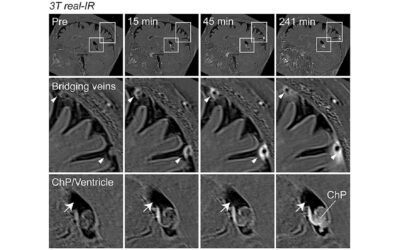
Exercise supports the treatment of non-alcoholic fatty liver disease by impacting on several metabolic pathways in the body, a new study from the University of Eastern Finland shows. Regular HIIT exercise over a period of 12 weeks significantly decreased the study participants’ fasting glucose and waist circumference, and improved their maximum oxygen consumption rate and maximum achieved workload. These positive effects were associated with alterations in the abundance of a number of metabolites. In particular, exercise altered amino acid metabolism in adipose tissue. The study was published in Scientific Reports.
Non-alcoholic fatty liver disease (NAFLD) is the most common liver disease, affecting approximately 25% of the world’s population. Being largely asymptomatic, the disease may progress from the accumulation of fat in liver cells to liver inflammation and liver cirrhosis. NAFLD is associated with obesity and other characteristics of the metabolic syndrome, such as type 2 diabetes and abnormal blood lipid concentrations. The accumulation of fat in the liver can be reduced by weight loss and a health-promoting diet.
Exercise is an integral part of the treatment of NAFLD. The benefits of exercise may relate not only to weight management, but also to alterations in the metabolites produced by the body and gut microbes, whose role in fatty liver disease remains poorly understood.
In the new study, the researchers comprehensively examined the effects of exercise on metabolism in patients with non-alcoholic fatty liver disease. The randomized controlled intervention study involved 46 subjects diagnosed with NAFLD. They were divided into an exercise intervention group that had a HIIT (high-intensity interval training) session twice a week, plus an independent training session once a week for 12 weeks, and into a control group that did not increase exercise during the study. Neither of the groups sought to lose weight nor changed their dietary habits during the intervention. In addition to conventional medical examinations and laboratory tests performed at the onset and end of the study, the researchers also performed untargeted metabolomics analyses to identity various metabolites and their abundance in adipose tissue, plasma, urine and stool samples. Based on the results, exercise affected metabolic pathways differently in different tissues.
Exercise had a beneficial effect on fasting glucose concentrations, waist circumference, maximum oxygen consumption rate and maximum achieved workload. These factors were also associated with many of the observed alterations in the abundance of various metabolites in the exercise intervention group. The most significant alterations were observed in amino acids and their derivatives, lipids and bile acids.
In particular, exercise increased the levels of amino acids, which are the building blocks of proteins, in adipose tissue. According to the researchers, their higher accumulations in adipose tissue may be associated with improved lipid and glucose metabolism, as well as with reduced insulin resistance.
The levels of various gut microbial metabolites were altered as a result of exercise, which is suggestive of changes in the composition of gut microbes, or in their function. Among these metabolites, increased amount of indolelactic acid, for example, can strengthen the intestinal mucosa, immune defence, and glucose balance.
Based on the results, exercise can have a beneficial effect on many factors contributing to disease in patients with NAFLD, even without weight loss and dietary changes. Adipose tissue seems to play a key role in these effects. Exercise improved fasting blood glucose levels and modified the metabolism of amino acids, lipids, and bile acids. However, abnormal blood lipid concentrations were not improved by exercise alone: their treatment requires attention to the quality of dietary fats.
Research article: Babu, A.F., Csader, S., Männistö, V. Tauriainen, M.M., Pentikäinen, H., Savonen, K., Klåvus, A., Koistinen, V., Hanhineva, K. & Schwab, U. Effects of exercise on NAFLD using non-targeted metabolomics in adipose tissue, plasma, urine, and stool. Sci Rep 12, 6485 (2022). https://doi.org/10.1038/s41598-022-10481-9









